Australia’s animal emblems

AUSTRALIAN ANIMALS ARE AS vast and varied as the continent they inhabit. A privileged few of our some 250 species of distinct mammals were chosen as state emblems during the last 40 years, reflecting how they take pride of place in respective parts of the country.
Here are all our states’ and territories’ furry or feathery representatives.
South Australia
Southern hairy-nosed wombat
(Bird emblem: piping shrike; unofficial)
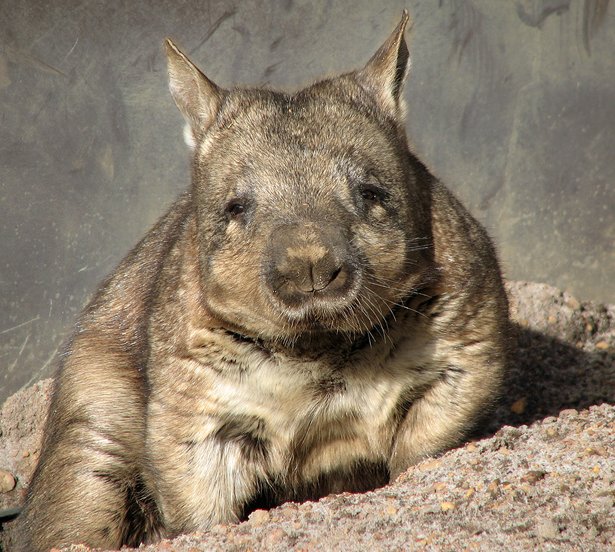
CREDIT: Stygiangloom/Wikimedia Commons
The State officially adopted the species as its emblem on 27 August 1970. Nicknamed the ‘bulldozer of the bush’, this once widespread marsupial is now endangered and confined to the open, dry plains of South Australia. Here it enjoys complete protection, although the threats of farmers, dogs, rabbits and vehicles remain.
Known for its broad, blunt head and silky soft grey-brown fur, it is distinguished from other wombat species by its longer ears and fine hairs coating its snout. This snout is especially useful for eating the native grasses, as are the claws in digging deep burrows to survive in the hot, arid Eyre Peninsula and Nullarbor Plain. The backward facing pouch helps keep dirt out, and its snorting and screeching is equally as effective in keeping intruders away from their feeding grounds.
Western Australia
Numbat
(Bird emblem: black swan)
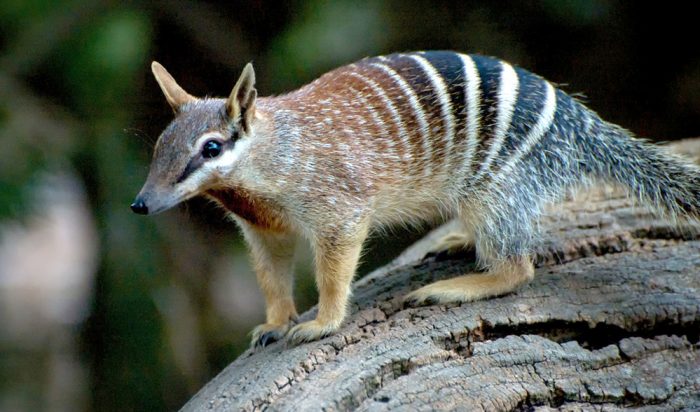
CREDIT: Helenabella/Wikimedia
The State’s adoption of this small, slow-moving creature on July 25, 1973 may be the reason for its continued existence. Restricted to small areas of south west WA, the vulnerable species was critically endangered only a few years ago.
But the WA Department of Environment and Conservation has diminished the numbat’s main predator, the fox, through controls and baiting. And Perth Zoo has initiated captive breeding. Unlike other marsupials, it is pouch-less and mainly active during the day. Characteristically reddish-brown with white bands across its body and a brush-like tail, numbats have a pointed snout and long tongue, perfect for consuming up to 20,000 termites per day.
Northern Territory
Red kangaroo
(Bird emblem: wedge-tailed eagle)
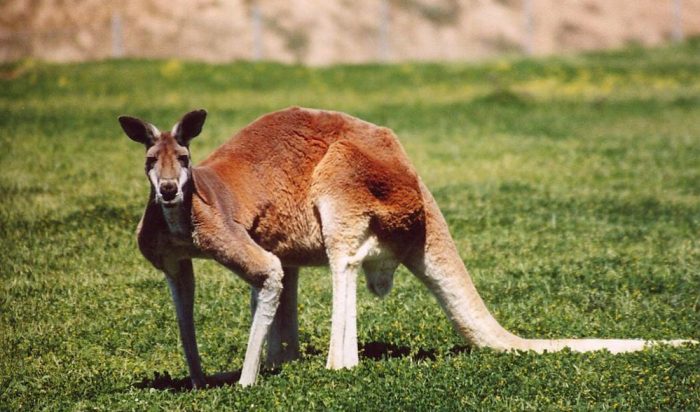
CREDIT: Wikimedia
Red kangaroos are the largest living marsupials, with adult males growing up to 2.7 m tall. They were made the faunal emblem of the NT in 1975. These macropods (meaning ‘big-footed’) are herbivores, needing very little water. They are prominent throughout inland Australia where annual rainfall is less than 375 mm and their thick fur – rusty-brown for males and smoky-grey for females, reflects a significant amount of heat as protection from the harsh climate.
While the species live in small mobs, there is otherwise very little social interaction, except during droughts where larger numbers congregate in the limited, open grassy areas for food. A notorious feature is the tail, often called the fifth limb, which helps maintain balance as the kangaroo hops at speeds up to 70km/h. Never moving backwards, the ‘roo’ is held as a symbol of progress.
Queensland
Koala
(Bird emblem: brolga)
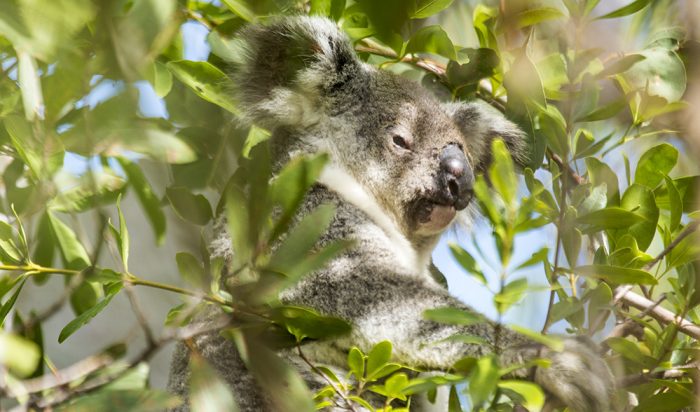
CREDIT: Andrew Gregory
Officially proclaimed in 1971, the koala is common throughout the forests and woodlands of eastern Australia’s coastal regions. This revered marsupial spends most of its life in the tops of eucalyptus trees, dozing up to 20 hours a day.
Often misunderstood as lazy, the koala generally sleeps this long to conserve the vast energy needed to digest their toxic, low-nutritious diet of eucalyptus leaves. The moisture provided by eucalyptus leaves and dew deposited overnight are actually sufficient enough for the koala to rarely need water. Regarded as gentle and cute, its conspicuous mating calls sound like they belong to a wild boar rather than a docile marsupial.
New South Wales
Platypus
(Bird emblem: kookaburra)
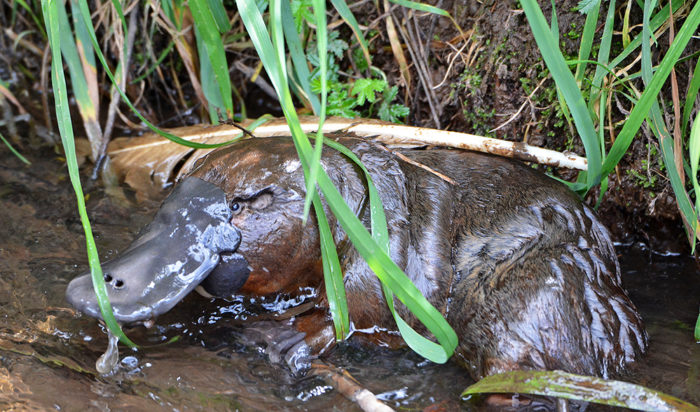
(Image credit: Sharon Wormealton)
Proclaimed as the state’s emblem in 1971, the platypus is one of two monotremes (mammals which lay eggs and suckle their young), endemic to the Australasian region. Legal protection granted in the 1920s means it is no longer endangered.
With a distinctive duck-like bill, webbed feet and beaver-like tail, the odd looking creature finds habitat in rivers and streams throughout eastern Australia. Mostly nocturnal, the platypus feeds on yabbies, worms, insect larvae and snails. While notorious for being shy, adult males use venomous spurs on the heel of each foot to ward off predators.
Victoria
Leadbeater’s possum
(Bird emblem: helmeted honeyeater)
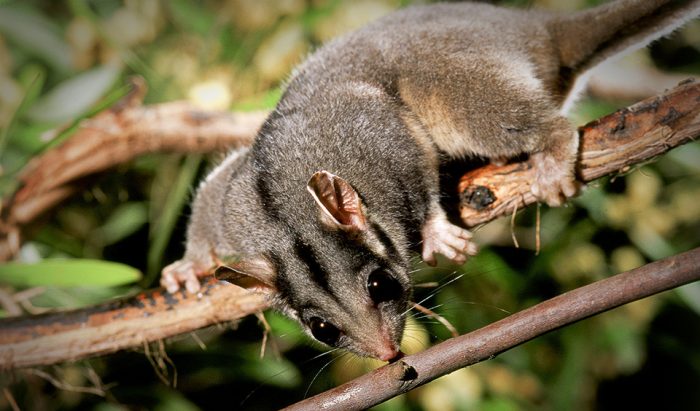
CREDIT: Esther Beaton
This rare possum is endemic to Victoria and was adopted as Victoria’s emblem on 2 March 1971. Its habitat is wet, high-density eucalypt forests and the mountain ash forests of the State’s Central Highlands. Thought to be extinct in the early 20th century, its rediscovery near Marysville in 1961 was a great surprise.
Today, the Leadbeater’s possum is endangered, as its survival is heavily linked with the health of eucalyptus forests and the availability of the old tree hollows in which it prefers to live. Uniquely, its club-shaped tail is as long as its body and, unlike other possums, it has no gliding capability, instead showing great agility in leaping between trees.
Tasmania
Tasmanian devil
(Bird emblem: yellow wattlebird; unoffical)
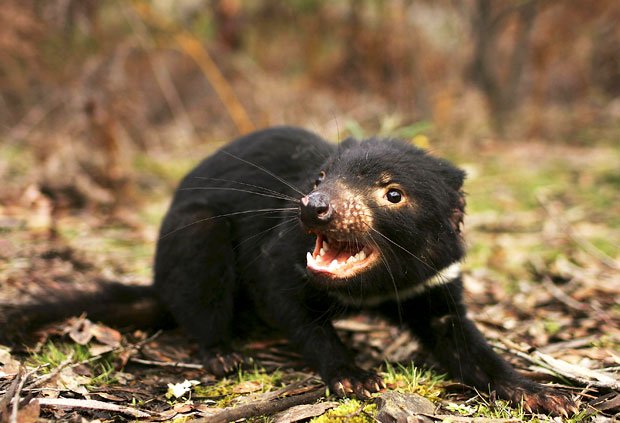
CREDIT: Getty Images
While it hasn’t been officially declared an emblem, most Tasmanians would tell you they have adopted this iconic animal as the island state’s mascot. The Tassie devil is the world’s largest surviving carnivorous marsupial and is endangered within Tasmania, the only place where it remains in the wild.
The biggest threat to this black-furred scavenger, with a reputed bad temper and famous yawn, is a lethal facial cancer which is sweeping through the population.
Australian Capital Territory
Bird emblem: gang-gang cockatoo
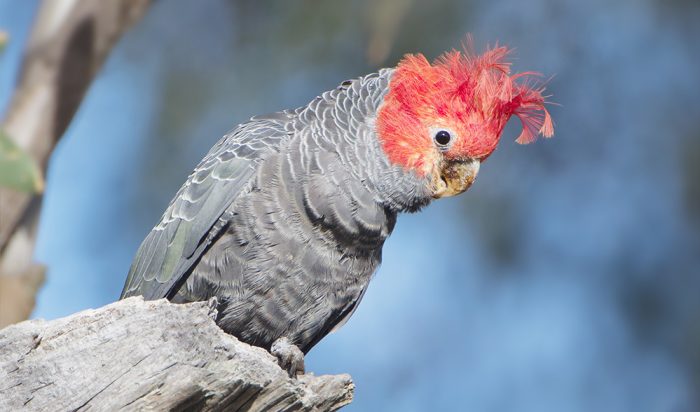
CREDIT: JJ Harrison/Wikimedia
While the ACT currently has no official animal emblem, it does have a bird emblem. The gang-gang cockatoo, with its ash-grey plumage, was adopted as the faunal emblem for the ACT on 27 February, 1997. Canberra is the only city in Australia where these distinctive birds live.
During winter, small flocks are common in gardens around the city where they feed on pine cones, firethorn and hawthorn berries and their call sounds more like a creaking gate than the familiar loud screeching of the sulphur-crested cockatoo. The gang-gang was declared a vulnerable species in 2005.




